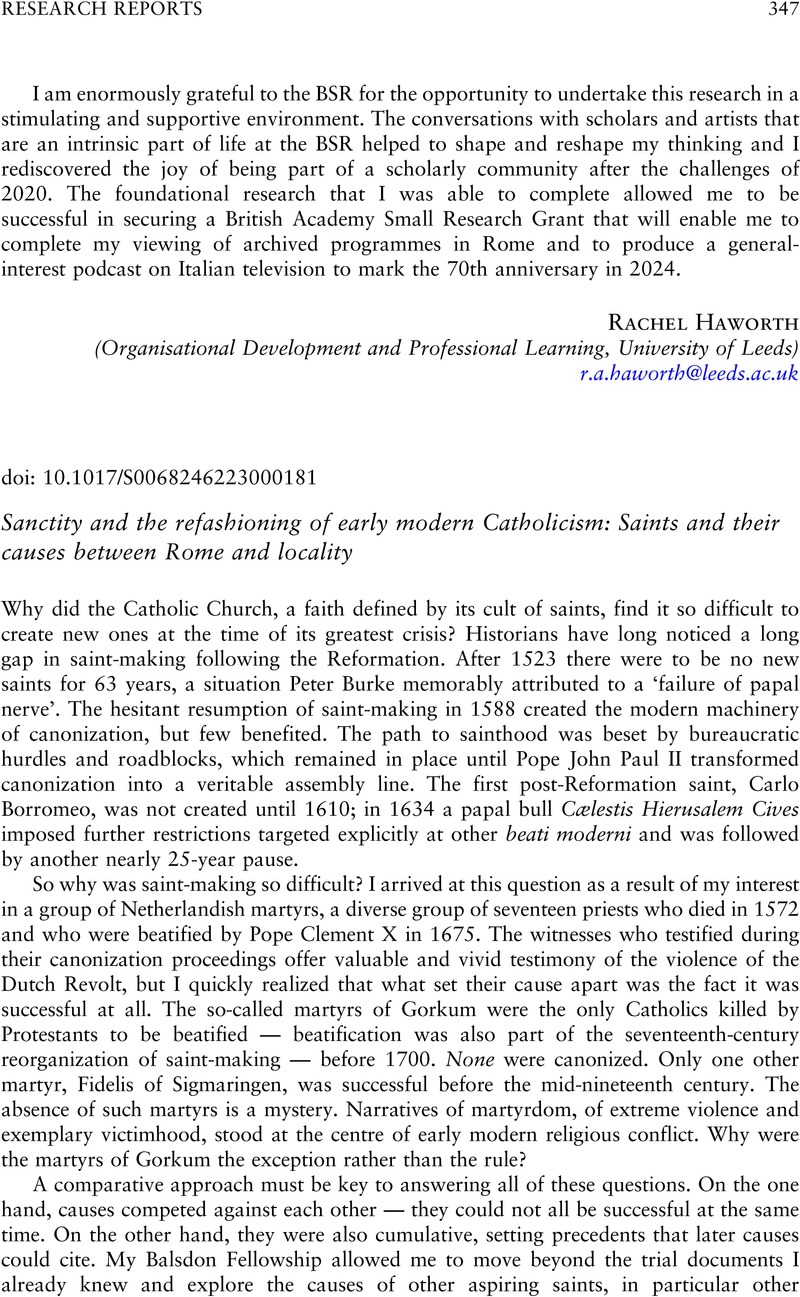No CrossRef data available.
Article contents
Balsdon Fellowships: Sanctity and the refashioning of early modern Catholicism: Saints and their causes between Rome and locality
Published online by Cambridge University Press: 16 November 2023
Abstract
An abstract is not available for this content so a preview has been provided. Please use the Get access link above for information on how to access this content.

- Type
- Research Reports
- Information
- Copyright
- Copyright © British School at Rome 2023


